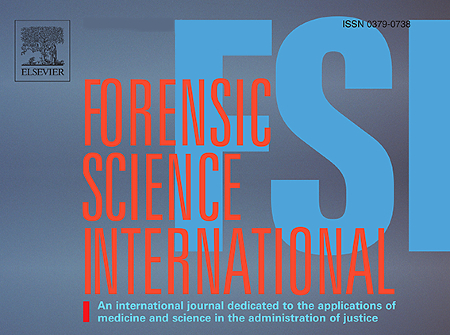Forensic Science International Article by Microtrace Scientists
The May 2018 edition (volume 286) of the journal Forensic Science International features a research article co-authored by four Microtrace scientists. Chris Palenik, Kelly Brinsko-Beckert, Joseph Insana, and Skip Palenik contributed to the article entitled, “Analytical and transfer characteristics of a fluorescent detection spray: Implications for subvisible and nanotrace particle transfers.” In the article, the authors analyze the subvisible particles which comprise fluorescent detection sprays. These sprays leave a fine and highly fluorescent film on potential evidence, which transfers to the skin or clothing of persons in direct contact with treated objects. Crime labs can then expose potential evidence to ultraviolet light to locate these transferred particles and help determine if direct contact has occurred between a suspect and the pretreated evidence. The authors of this study provide a microanalytical characterization of a common fluorescent tracer and consider analytical precautions that maximize the evidentiary value of sub-visible particles and nanotraces.
The full article can be found here.
Abstract
Fluorescent detection sprays are applied to objects to elucidate evidence of contact. Billed as an invisible powder, evidence of contact between objects may be visualized through illumination by ultra-violet light, which causes the fluorescent tracer to luminesce. While the presence of the fluorescent powder on a suspect or object is often used as evidence of direct contact, the fine nature of the powder, which is comprised of sub-visible particles that are generally less than 10 μm in diameter, lends itself to higher-order transfers that do not necessarily involve the original object. Due to the small particle size and light-yellow color, the particles are generally invisible to the unaided eye in white light. This increases the opportunity for unwanted or unanticipated transfers (i.e., contamination). This article provides a microanalytical characterization of a common fluorescent tracer and the approaches by which this powder (or analogous powders) may be applied, detected, and specifically identified in quantities that range from major to trace. This research illustrates the ease of higher order cross-transfers (up to the 10th order) and the considerations necessary to maximize the evidentiary value of sub-visible particles and nanotraces, while minimizing the chances of cross-contamination.
Forensic Science International
Forensic Science International publishes original contributions in the many different scientific disciplines pertaining to the forensic sciences. Fields include forensic pathology and histochemistry, chemistry, biochemistry and toxicology (including drugs, alcohol, etc.), biology (including the identification of hairs and fibres), serology, odontology, psychiatry, anthropology, the physical sciences, firearms, and document examination, as well as investigations of value to public health in its broadest sense, and the important marginal area where science and medicine interact with the law.
The journal publishes:
- Original Research Papers (Regular Papers)
- Review Articles
- Rapid Communications
- Technical Notes
- Forensic Anthropology Population Data
- Case Reports
- Preliminary Communications
- Letters to the Editor
- Book Reviews
The journal covers all legal aspects of the general disciplines listed above, as well as specialist topics of forensic interest that are included in, or are related to, these disciplines, e.g.:
- Biochemical and chemical analyses, and the forensic application of advanced analytical, physical, chemical and instrumental techniques
- Bitemark evidence
- Battered child syndrome
- Questioned documents
- Ballistics, projectiles and wounds
- Fingerprints and identification
- Tool marks
- Contact traces
- Poisoning
- Breath analysers
- Accident investigation and mass disasters
National Institute of Justice
This research was partially supported by a National Institute of Justice (NIJ) award in the area of “Research and Development in Forensic Science for Criminal Justice Purposes.”
How May We Help You?
Contact usto discuss your project in more detail.








